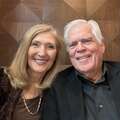“What Are The Key Indicators For Aortic Valve Repair Vs. Aortic Valve Replacement?” By Dr. Lars Svensson
By Adam Pick on February 20, 2011
Talk about a great coincidence… Just a few minutes after receiving this patient question, Dr. Lars Svensson — the Director of the Aorta Center at the Cleveland Clinic — walked up to my booth at the 47th annual Society of Thoracic Surgeons meeting. That said, here is Dr. Svensson’s response to the question, “What are the key indicators that a diseased aortic valve can be repaired not replaced?”
To learn more about Doctor Lars Svensson, cardiac surgeon, please visit his surgeon profile page by clicking here. For those of you who are hearing impaired, I have provided a video transcript below.
Adam: Hey, everybody. It’s Adam and I’m here in San Diego at the 47th annual STS convention. Very fortunate to be standing next to Dr. Lars Svensson, heart valve surgeon from the Cleveland Clinic. Dr. Svensson has been in practice for just about 30 years.
Dr. Svensson: That’s right.
Adam: And we’re going to be answering a question that came in about aortic valve surgery, aortic regurgitation, and the question is: From a surgeon’s perspective, when you’re going to treat aortic valve regurgitation in surgery, what are the key indicators that you can repair a valve versus going in and having to replace that valve?
Dr. Svensson: That’s a very important question. In patients with aortic valve stenosis, we tried at one time to repair them but most of them failed within a year. So, it’s really the patients with leaking valves that we can repair and it’s been technically the patients with bicuspid valves, which 2% of the population have, that we can repair about 70% of them. So that’s my repair rate for bicuspid valves. We usually do them through a small keyhole incision, a noninvasive incision, and we do them with less than a 1% risk of death. And then the other group of patients are the patients with three leaflets. Often it can be a congenital type of problem, and in those patients, we do the David Reimplantation operation, and we’ve got a series now, about 290 patients, and that’s a great operation for those patients. Based on the echo, I can pretty much tell when I can repair the valve and the repair rate for those patients is about 90% and that’s particularly important because these are young patients has often the bicuspid valve, leaking valves, so it’s a young patient. We can repair the valves and the results are excellent. For the reimplantations, the durability is 96% at 10 years. In other words, a 4% failure rate and you don’t have to be on Coumadin and blood thinners in other words. And for the bicuspid valves, not quite as good, but it’s 91% freedom from another operation. But if you can get through those years when you’re young without being on Coumadin, you can have a active lifestyle, and then later as you get older, we can put in a biological valve and in an older person, the biological heart valves have a much better durability and we’re doing research now in putting a valve in a previously replaced biological valve, so that’s another option coming down the road.
Adam: And by — when you say valve in valve, are you talking about the transcatheter technologies that are coming out or something different?
Dr. Svensson: That, too. We’ve already done eight patients where we’ve done a percutaneous valve with another valve in a failing valve or one that’s not working very well, but in the patients who’ve had previous open biological valves, we are working on putting in a new percutaneous valve, put it through the groin or through the left ventricular and putting that in, and there’s a new technology we’re working on in a valve that you put in and it’s designed so you can then it open, but then you can go back and replace it percutaneously without opening the patient’s chest again, so that’s a new technology, too.
Adam: Wow. That sounds very exciting and on behalf of all the patients, I want to thank you for the work that you are doing, the research, and your pursuit of healthy hearts.
Dr. Svensson: Well, we enjoy taking care of patients and that’s what we all are doing this for is to ensure patients get better again.
Adam: Well, there you have it. Again, Dr. Lars Svensson, thank you.
Dr. Svensson: You, too.
Keep on tickin!
Adam
|
ROBERT says on February 20th, 2011 at 5:12 pm |
|
The script that goes with the video is very useful as I have hearing problems. Thanks Adam. |
 |
|
ruthmcc says on February 20th, 2011 at 9:09 pm |
|
it looks like great news for all the animal valve receipicants, but with the mechanical (st Jude), what new procedures are promising in the future, and about how long will they last. |
 |
|
Mark Brown says on August 20th, 2013 at 4:59 pm |
|
Thank you for this information. The professionals in this field are heros. So are the people who undergo experimental procedures. |
 |












